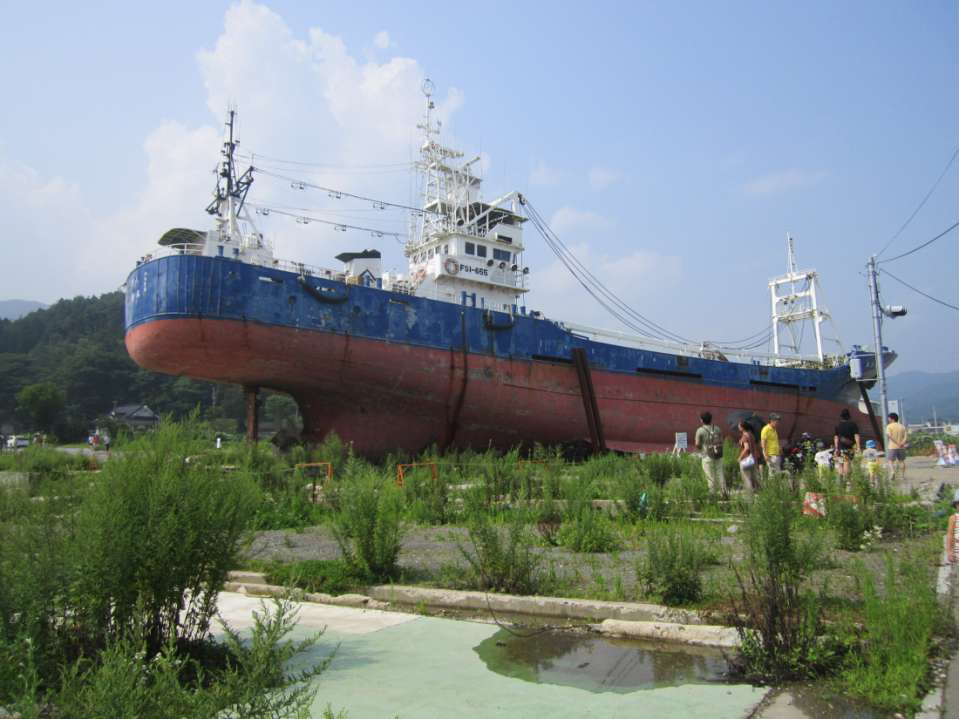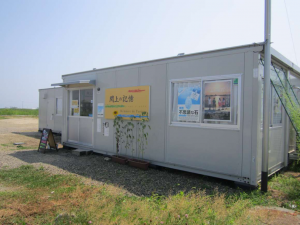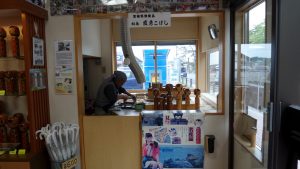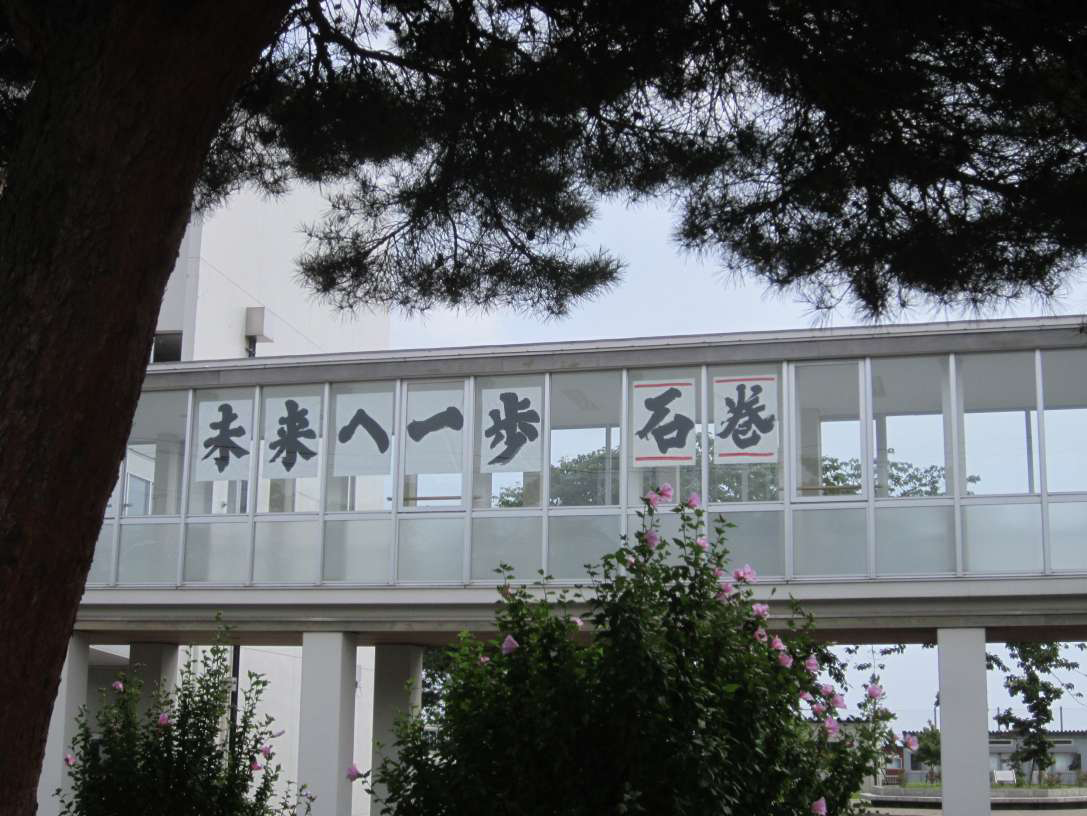This piece is part of the JAWS online series of Reflections from Tōhoku.
Introduction: “Useless Things”
In her work on Genkaijima’s earlier earthquake and 3.11’s effects on Onagawa in Tohoku’s Miyagi Prefecture, Nakano (2014, 2016) emphasized communities engaging in what government and economic interests considered “useless things”: storytelling, festivals, local customs. Tohoku communities experiencing the triple disasters (earthquake, tsunami, and nuclear plant meltdown) on March 11, 2011 were “communities of memory” (Bellah, 1985; Creighton 1998, 2014), where attachment to place and people merged, through long-term participation in festivals, rituals, and customs. This essay presents five Tohoku communities I have visited repeatedly since 3.11 and discusses the present context in connection to the ill-fated Tokyo 2020 Olympics (delayed until 2021), Covid-19, and 3.11’s future.
Five Communities of Memory

Sendai: The Star Festival and Archiving Memory
Sendai is famous for its Tanabata Festival, involving festive decorations and hanging colorful paper strips with wishes on outdoor bamboo trees. Most of Japan celebrates Tanabata (meaning seventh night) on July 7, but Sendai celebrates it on the lunar calendar in August. Sendai considered cancelling its festival in 2011, because of a Japanese idea that people should not celebrate when many are suffering but decided to hold it. Writing about the importance of area festivals after disasters, Isao (2012, 86) claims these are not sufficient for recovery but have meaning beyond entertainment as part of survivors’ reasserting local identities and continuity with the past.
Sendai created a “memory center” to archive the disasters, record survivor’s experiences, and their memories of those who died, called “Wasuren Senta.” “Wasuren” (“don’t forget”) was assertively imaged with a pencil wielding fist. The Wasuren Center was placed in a new community building, “Mediatheque,” not quite open a year. Its architect, Ito Toyo (2012), was scheduled to fly to Sendai on March 11, 2011 to talk at the one-year anniversary of its construction, but his flight was cancelled due to the disasters. The Center allows people to confront trauma, memorialize the dead, and preserve stories for the future.

Kesennuma: Flowers, Art Gardens and “Matter Out of Place”

Mourning, memorializing, and memory keeping in Kesennuma, often involved planting flowers or creating art gardens. One “Art Park” was created at the city’s, “Ground Zero.” Someone planted tall sunflowers along where a house had been, with a hand-painted sign asking people not to pick them, indicating the person had been growing them there (presumably where their house previously stood) for 27 years.

Kesennuma held an icon of the disasters, the ship Kyotoku Maru No. 18. Houses, which “belong” on land, were swept into the seas by the tsunami, the ship conversely onto land where the houses had been. The ship became emblematic of “matter out of place,” meaning not being where it “should” be, creating a sense of disorder, chaos, and violated meaning. Some community residents wanted the ship destroyed, while others, including the mayor, thought it should be kept and made into a historic memorial site. At a community meeting, those who wanted it destroyed prevailed, indicating it invigorated painful memories. The ship was destroyed shortly after I saw it.
Yoriage: Storytelling, Performance Groups, Children’s Voices
Yoriage was described by media as a town washed away (Creighton 2014, 109). Residents created a monument in front of the damaged junior high school where several students died (see also Boret and Shibayama 2018). Nearby, a mobile trailer was used to house the “Kiroku Senta” (Records’ Center), providing a venue for previous community dwellers to gather. Researchers, including Flavia (2022) in this series, have discussed storytelling in people’s recovery. Knitting circles doubled as storytelling groups. Performance opportunities via taiko drumming and theater groups for youth were created; children were given chances to express their voices. An art project had children express their vision of how Yoriage should be rebuilt. One girl created a model of a house on stilt-like edifices so water could pass underneath and a helicopter landing pad on top so people could escape. One can possibly imagine the girl’s experiences and how her artwork might have helped her work through them.
Opposition occurred between former Yoriage dwellers and the government, which insisted the junior high school was not safe and had to be destroyed and the monument in front of it removed. The community lost its attempt to keep the memorial where it was, and it was relocated. The government’s insistence may have also been linked to avoiding criticism of the school being structurally inadequate such that it should have been replaced before the disasters.



Fukushima: “Project Fukushima”
Until 3.11, Fukushima was a city known within Japan for seafood, peaches, other agricultural produce, and folkcraft wooden kokeshi dolls. After the nuclear accident, Fukushima became a household word throughout the world, often associated with Hiroshima and Nagasaki as cities that have struggled with radiation poisoning. This is seen with the addition of Fukushima to the chant “No more Hiroshima, No more Nagasaki, No more Fukushima.” Fukushima dwellers were reassured for decades that a nuclear disaster could not happen there—but it did. Communities suffered evacuation, while others suffered from being left in the possible nuclear plume range. There was denial from the government and TEPCO (Tokyo Electric Power Company) that radiation was linked to high rates of childhood thyroid cancer, while children’s daily lives included carrying Geiger-counter-like keychains on their backpacks. After the nuclear plant meltdown, Fukushima residents created “Project Fukushima,” to bring local residents together via music, performances, and art to tell their stories and discuss how Fukushima should be reimagined for the future, rather than leaving this to government and outside forces.


Ishinomaki: Living Amidst Rubble, Moving Beyond Gambaru
Ishinomaki was hard hit by the earthquake and tsunami. Stories of everyone I met there included loss of someone close to them. Gambaru (in its various forms of gambatte, gambarō, and Tohoku dialect’s, gambeppe) inscribes a Japanese value to persevere, “hang in there,” keep going. Post disasters, its use was ubiquitous, something both applauded and criticized. Teachers had to provide usual education, while helping students through the disasters’ aftermath. Calligraphy posted across a high school’s main windows, emphasized gambaru with “Gambarō Ishinomaki Gambarō.” However, “persevere” was not simply repeated for 10 years. After two years, the message shifted, suggesting students and other Ishinomaki dwellers go beyond perseverance. Calligraphy encouraged students to consider [their] desires/goals and to “take one step towards the future, Ishinomaki” (mirai e ippo, Ishinomaki). “Gambaru” was used to get survivors past the worst period, with later encouragements to dream and aim towards a desired future.
In Ishinomaki, gareki (rubble), was projected to remain for decades (Bestor 2013), first where it was created, then where it was piled up along shorelines. It remained for years in community grave areas. In 2013, while visiting such a grave area, I encountered a family of a father, mother, and two girls—one about seven-years-old and a toddler seemingly between one and two. A boy in the family had died on 3.11. The family was commemorating ancestors, known dead relatives, and their deceased son. For the older girl, the brother was someone she had known. I wondered what growing up with this “ghost” brother would be like for the younger girl born after he died. Would such visits project his existence into the future through the sisters’ knowledge of him, or, for the younger sister in particular, result in a childhood “haunting” of someone who was kin but not someone with whom she grew up.

Conclusion: 3.11’s Future
The 10th anniversary of the disasters is “past,” but for people and communities who experienced them they are “present.” They also have a future. The disasters were discussed in 2013, as Japan was making its bid for the Tokyo 2020 Olympics. Criticism against Japan’s bid emphasized that costs of restoring Tohoku would continue into the future, and Japan should not risk further financial burdens by hosting the Olympics. Japan also initiated the Tokubetsu Zai, or “Special Tax” in 2013 to cover costs of the disasters. The tax, initially imposed for 25 years, was placed on a population struggling from Japan’s two “lost” decades of economic stagnancy since the 1990s. Complaints were made about usages of the tax funds, such as buying new fire trucks for Tokyo on the grounds some were sent to Tohoku, hence possibly exposed to radiation—at a time government still denied radiation release was harmful to people (Creighton 2014.) One Japanese women asked me: don’t you think Japan will have another major earthquake or disaster before the 25 years is up? There was already recognition this special tax could have a long future.
Covid-19 has created difficulties, death, and financial losses in Japan as elsewhere. It delayed the 2020 Olympics, while the populace continued protesting them. The Olympics were held in 2021 but mostly as media only events, not allowing Japanese much benefit from tourism revenues. By 2021, it was indicated that financially 3.11 recovery would take another 45 years (from the tenth anniversary, not the year the disasters occurred). Thus, 3.11 has a long future on the communities ruptured, the psyches of those experiencing it, and as a financial burden on Japanese generally.
Millie Creighton is a Japan Specialist, Asianist and Anthropologist in the Department of Anthropology at the University of British Columbia (UBC), where she was one of the founders of the Centre for Japanese Research. She has conducted extensive research on Japan’s department stores, consumerism, tourism, popular culture, gender, minorities, law and constitutional debates. She received the Canon Prize for work showing how consumerism reflects nostalgia, modernity, and imagined future trajectories. She has also extensively researched Japan’s connections with other countries and world areas. From 2011, she has researched Tohoku communities affected by the triple disasters. Her published article on 3.11 (Creighton 2014) links place, people and community in relationship to the disasters.
References
Bellah, Robert (1985). Habits of the Heart: Individualism and Commitment in American Life. Berkeley, CA: University of California Press.
Bestor, Theodore (2013). Disasters, Natural and Unnatural: Reflections on March 11, 2011, and its Aftermath. The Journal of Asian Studies, 72(4), 763-782.
Boret, Penmellen Sebastien and Akihiro Shibayama. (2018). The Roles of Monuments for the Dead During the Aftermath of the Great East Japan Earthquake. International Journal of Disaster Reduction Risk. 29 (2018): 55-62.
Creighton, Millie. (1998). Pre-Industrial Dreaming in Post-Industrial Japan: Department Stores and the Commoditization of Community Traditions. Japan Forum, 10(2), 1-23.
Creighton, Millie. (2014). Wasuren!–We Won’t Forget! The Work of Remembering & Commemorating Japan’s & Tohoku’s 2011 (3.11) Triple Disasters in Local Cities & Communities. Journal of Global Initiatives 9.1:97-120. (Available at: http://digitalcommons.kennesaw.edu/jgi/vol9/iss1/8).
Flavia, Fulco. (2022). Kataribe: Ten Years of Post-Disaster Storytelling in Tohoku. JAWS Online Series of Reflection on Tohoku. 18 January 2022. (Available at: https://japananthropologyworkshop.org/kataribe-ten-years-of-post-disaster-storytelling-in-tohoku/)
Gordillo, Gaston. (2014). Rubble: The Afterlife of Destruction. Durham, NC: Duke University Press.
Isao, Hayashi. (2012). Folk Performing Art in the Aftermath of the Great East Japan Earthquake. Asian Anthropology, 11(1), 75-87.
Itō, Toyo. (2012). Ano hi kara no kenchiku (Architecture from That Day). Tokyo, Japan: Shūeisha.
Nakano, Kiwa. (2014). Kiki o noikoeru chie: Fukuoka ken seihō oki jishin no hisaichi Genkajima no fukkō katei [A Wisdom to Get Over the Crisis]. Keieironshu, 27. Daō Bunka Daigaku, Daō Bunka University.
Nakano Kiwa. (2016). “Useless” Things are Vital: Young People Trying to Recover Themselves after the Earthquake Disaster in Onagawa, Japan. Paper presented for the Anthropology of Asia Talk Series, University of British Columbia, March 3.
